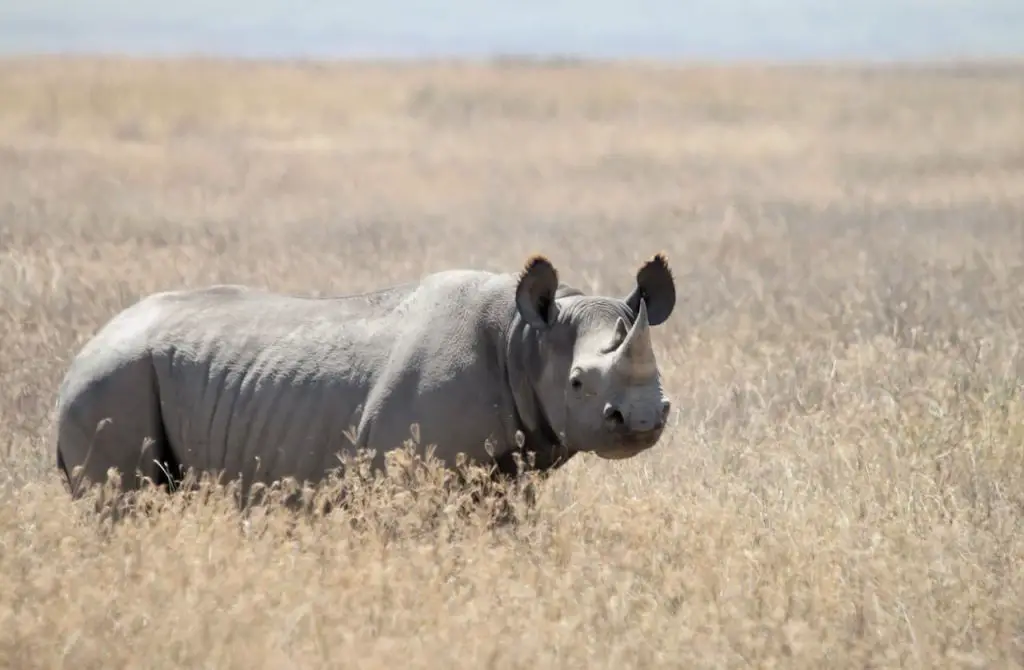What Eats A Rhinoceros?
Categories
- Accipitridae (1)
- Acrididae (1)
- Algae (2)
- Alligatoridae (1)
- Amoebidae (1)
- Amphibians (3)
- Anatidae (1)
- Anguillidae (1)
- Arachnids (2)
- Bears (2)
- Big Cats (3)
- Birds (13)
- Bovidae (5)
- Bufonidae (1)
- Camelids (1)
- Cameras (1)
- Canines (13)
- Caridea (1)
- Carnivora (10)
- Castoridae (1)
- Cats (5)
- Cebidae (1)
- Cephalopod (1)
- Cervidae (2)
- Cetacean (1)
- Chondrichthyes (1)
- Crocodilia (2)
- Crustaceans (4)
- Culicidae (1)
- Cyaneidae (1)
- Dasypodidae (1)
- Dasyurids (1)
- Deer (1)
- Delphinidae (1)
- Desktop (1)
- Didelphidae (1)
- Dinosaurs (1)
- Dogs (13)
- Dolphins (2)
- Echinoderms (1)
- Education (10)
- Elephantidae (1)
- Equine (1)
- Erethizontidae (1)
- Erinaceidae (1)
- Farming (1)
- Felidae (5)
- Fish (5)
- Food Chain (31)
- Food Web (2)
- Formicidae (1)
- Frugivore (1)
- Gaming (1)
- Gastropods (1)
- Giraffids (1)
- Great Apes (2)
- Health Conditions (3)
- Herbivore (4)
- Hi-Fi (1)
- Hippopotamidae (1)
- Hominidae (1)
- Insects (10)
- Invertebrates (2)
- Keyboards (1)
- Laptops (1)
- Leporidae (1)
- Mammals (23)
- Marsupials (4)
- Mephitidae (1)
- Microchiroptera (1)
- Mollusks (2)
- Mongoose (1)
- Muridae (1)
- Nocturnal Animals (1)
- Odobenidae (1)
- Omnivore (2)
- Phasianidae (1)
- Phocidae (1)
- Plankton (1)
- Plants (2)
- Primate (1)
- Ranidae (1)
- Reptiles (7)
- Rhinocerotidae (1)
- Rodents (5)
- Salamandridae (1)
- Scarabaeidae (1)
- Sciuridae (2)
- Sharks (1)
- Shellfish (1)
- Sound (1)
- Spheniscidae (1)
- Suidae (1)
- Superfamily Papilionoidea (1)
- Theraphosidae (1)
- What Eats (5)
An adult rhino is so large and powerful that few predators would ever think of trying to kill and eat one.
However, a few predators will try to kill and eat a baby rhinoceros.
Hyenas sometimes attack little rhinos at night, when the mother rhinos sometimes cannot see well enough to protect them.
But in general, rhinos have very few predators. or natural enemies.
As for the question of what a rhinoceros eats—rhinos are browsers, which means they eat grass, a variety of leaves, and other vegetation.
Table of Contents
ToggleIntroduction
Rhinoceroses are magnificent animals that graze the grasslands and woodlands of Asia and Africa. They are distinguished by their horns and giant appearance. These herbivores are essential to the health of their ecosystems because they help to maintain a wide variety of plant and animal species and shape the terrain. The world of a rhinoceros is full of difficulties, though, since these tremendous creatures are threatened by human activity and predators.
What consumes rhinoceroses, and what keeps them alive in the wild? In a world where existence is a never-ending struggle against powerful opponents, rhinoceroses negotiate everything from lions and hyenas to crocodiles and humans. Discover the mysteries of these amazing species’ ability to survive in the wild by visiting with us through this thorough guide into their environment.
This article will examine the difficulties these enormous herbivores face in their native environments and the intricate dynamics of predator-prey relationships in the wild. We’ll also learn about the strategies they adopt to protect themselves from their opponents’ assaults and the diet they follow to stay alive. For more wildlife information and to read about the beautiful rhino, read below.
Predators of Rhinoceros
Even though they are massive animals, rhinoceroses however face challenges from a variety of predators in their native environments. These gigantic animals have to make their way through a world where merely existing is a never-ending struggle against powerful opponents.
1. Lions: The Stealthy Hunters
Lions are sometimes admired as the king of the African savanna due to their majestic appearance and frightening roars. But they are not just skilled at hunting lesser ones—they can also take on strong opponents like rhinoceroses. Despite the rhinoceros’ vast size and hide resembling covering, lions have cunning strategies to overcome these enormous herbivores.
Interactions between these two enormous animals are frequent in the vast grasslands that are home to both lions and rhinoceros. Because of their excellent senses and well-organized coordination, lions frequently prey on weaker or young rhinoceros. They pursue their prey methodically, using cover and false appearance to approach without drawing the attention of the watchful rhinoceros.
Lions move with rapid speed and fury once they are within striking range. They use their strong jaws and claws to punch deadly hits, aiming at weak parts like the neck or flanks. Even the most enormous rhinoceros can be overcome by a well-planned lion attack despite the rhinoceros’ strong defences.
But there are dangers associated with hunting rhinoceros for lions. Predators may get injuries or maybe lose their lives as a result of a poorly planned ambush or approach. A lion may be fatally wounded by a single rhinoceros horn thrust, and rhinoceros are notorious for being aggressive when confronted.
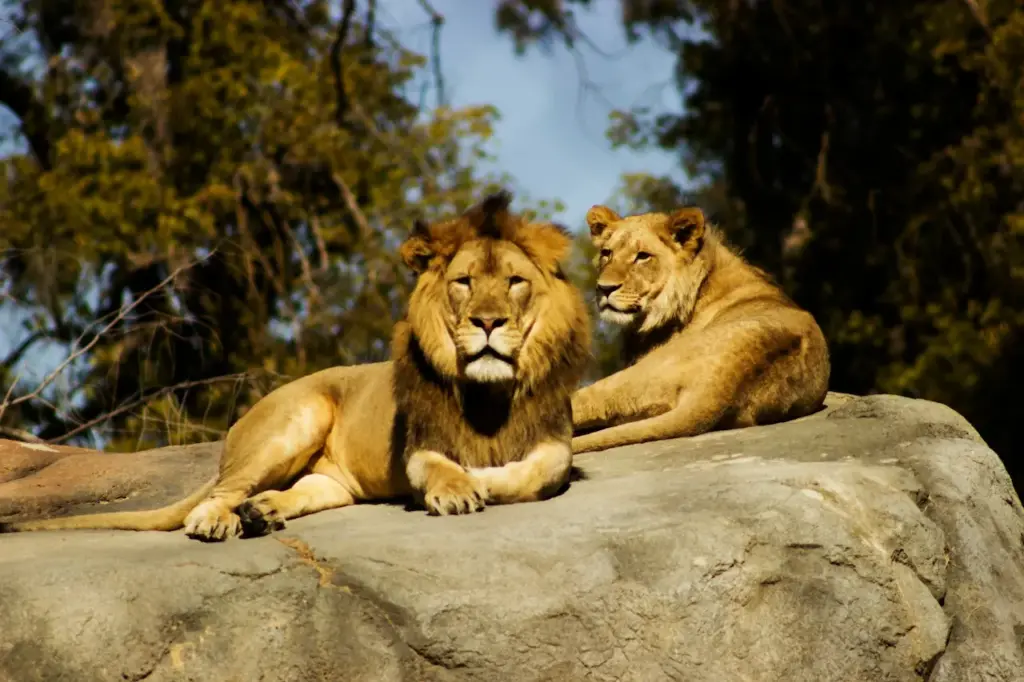
Two Lions Resting
2. Crocodiles: The Ambush Predators
Because of their intimidating recognition and ancient look, crocodiles are some of the most exciting animals in the natural kingdom. These reptiles, which may be found in freshwater environments in Asia and Africa, had a terrifying reputation as apex predators. The rhinoceros, a giant herbivore known for its power and durability, is one of their most famous prey species. The battle between rhinoceroses and crocodiles demonstrates the slyness and unmatched strength of nature’s hunters.
Crocodiles wait patiently in the misty waters of rivers and marshes, their sleek bodies hidden under the surface. They are nearly undetectable to unwary prey because just their eyes and nose out, allowing them to fit in perfectly. Due to their enormous size and protective coats, rhinoceroses may seem unreceptive to predators. But when they walk closer to the water’s edge to cool down or drink, they unintentionally become targets for crocodiles who are hiding in wait.
While lowering their heads to drink, rhinoceroses are at risk of being ambushed by crocodiles that are hiding beneath the surface. Crocodiles capture their prey with deadly accuracy due to their massive jaws filled with razor-sharp fangs and lightning-fast reflexes. The brutal display of power and survival instincts during the battle between predator and victim is terrifying to see. Even with their strong defences, rhinoceroses cannot withstand the sheer power and intensity of a starving crocodile.
The results of these confrontations can differ; some rhinoceroses escape with just minor wounds, while others are crushed by the cruel and harsh bite of a crocodilian. Still, crocodiles are a continuous reminder of the hazards that lie beneath the surface of the water. Every confrontation between crocodiles and rhinoceroses is a high-stakes play of life and death, with the most decisive and crafty animals emerging victorious.
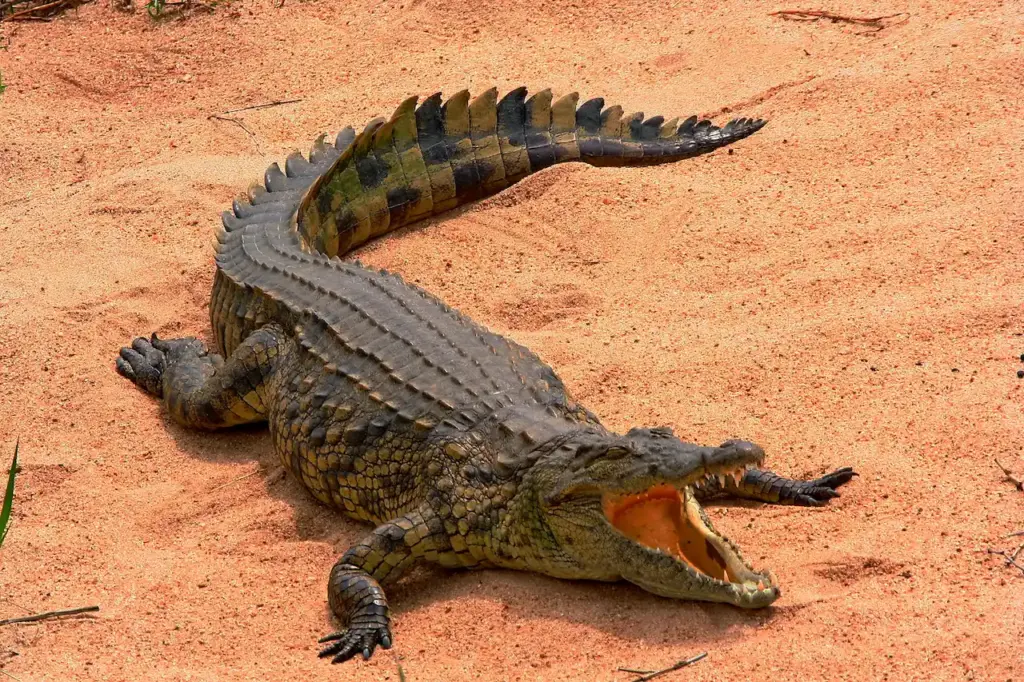
Crocodile Basking In The Sun
3. Hyenas: The Opportunistic Scavengers
Hyenas are among nature’s most adaptive and creative animals, and they are most noticeable in the vast African savannas, where the circle of life unfolds amid beautiful sights. Hyenas, who are well-known for their unreal howls and characteristic chuckle, are essential scavengers that frequently benefit from the carcasses of more giant predators, such as the mighty rhinoceros.
With their strong jaws and an acute sense of smell, these deadly carnivores can discover corpses kilometres away. Hyenas move quickly to take their place at the feast when a rhinoceros dies for natural reasons or is attacked by another predator, such as a lion or a crocodile.
Although they are recognised for being scavengers, hyenas are also expert hunters and can take down prey considerably more significant than them by using coordinated group tactics.
However, it goes beyond simply storing leftovers. Because of their strong jaws and specialised teeth, hyenas can easily break through the most complex rhinoceros bones. Because of their capacity to adapt, hyenas can retrieve every last bit of nourishment from their food, ensuring that no portion of the corpse is wasted.
Hyenas also perform an essential ecological role in rhinoceros habitats by assisting in the preservation of the ecosystem’s equilibrium. Hyenas play a vital role in maintaining the general well-being and durability of the savanna ecosystem through their ability to scavenge corpses and regulate the populations of smaller herbivores.
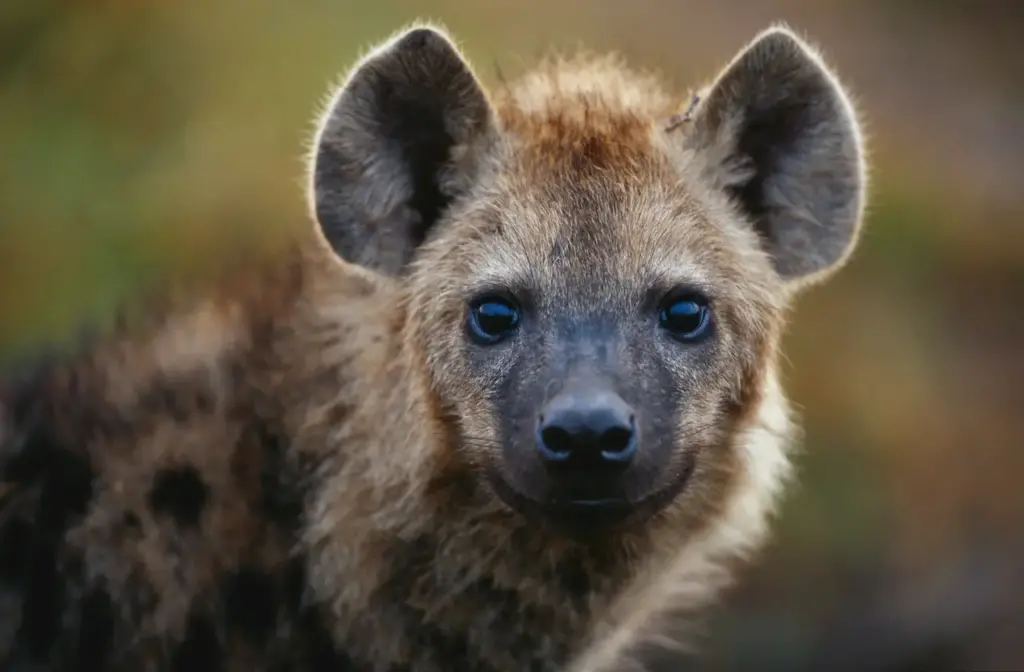
Head Shot Of A Hyena
4. Tigers: The Fierce Predators
In many habitats, including those where rhinoceroses roam, tigers also play an important role as predators due to their magnificent appearance and terrifying physical attributes. Due to their legendary agility and stealth, these majestic big cats are skilled hunters who can take down prey that is considerably larger than themselves.
The encounters between these two iconic species are uncommon as significant in areas where they coexist, such as portions of India and Southeast Asia. Tigers use their stealth and patience to hunt rhinoceroses efficiently. Tigers are faster and more agile than rhinoceroses, even with their massive size and thick hide. They frequently prey on young, wounded, or old rhinoceroses, taking advantage of any gaps in their defences.
Tigers hunt target weak spots like the neck or flanks with their strong jaws and keen claws in an attempt to swiftly render their prey helpless. However, there are dangers associated with hunting rhinoceroses for tigers. Even the most experienced tigers may have significant difficulties when dealing with adult rhinoceroses, especially the more prominent species like the greater one-horned rhinoceros or the Indian rhinoceros. They may cause considerable harm or even death to a tiger if captured or agitated because of their enormous size and powerful horns.
The connection between tigers and rhinoceroses illustrates the complex dynamics of predator-prey partnerships in the natural world despite the risks involved.
Even though they are unquestionably brutal predators, tigers are essential to controlling herbivore populations and preserving the equilibrium of the environment. We can better comprehend and appreciate these dynamics and the intricate web of life that supports the many ecosystems in our world.
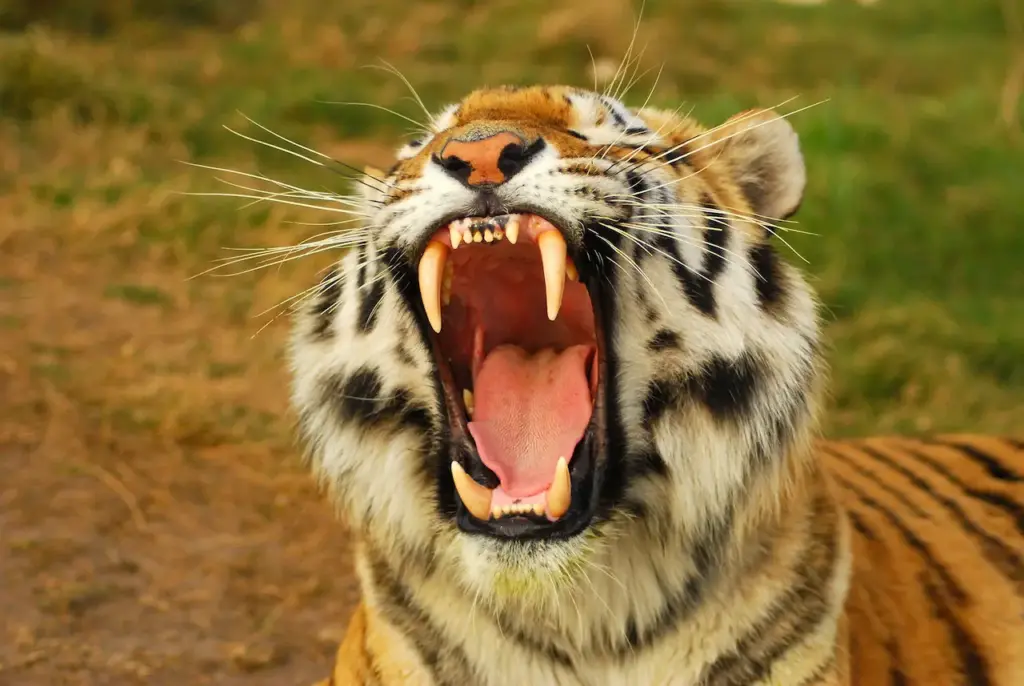
Closeup Image of a Roaring Tiger
5. Humans – The Most Dangerous Predators
The greatest threat to these magnificent animals is humans, even though they are not their natural predators. At an increasing rate, hunting illegally, habitat destruction, and the illicit wildlife trade have caused humanity to wipe out rhinoceros herds. Myths and false beliefs about the medical benefits of rhinoceros horn have created a demand for the product that has prompted poachers to brutally kill these threatened species. The threat of extinction posed by human activity to rhinoceros persists despite conservation initiatives and anti-poaching measures.
Furthermore, rhinoceros populations are further threatened by habitat loss and fragmentation brought on by human expansion. The degradation of rhinoceros habitats due to deforestation, urbanisation, and agricultural development has brought them dangerously close to extinction. Rhinoceros’ limited resources and shrinking ranges as a result of human encroachment on natural areas make them more vulnerable to illegal hunting and habitat destruction.
Moreover, rhinoceroses are seriously threatened by the illegal wildlife trade that is supported by ignorance and greed in humans. Traffickers take advantage of gaps in international legislation to cross borders with rhinoceros horns and other body parts, therefore supplying a profitable black market sector. The market for rhinoceros items remains high despite efforts to stop illegal trafficking, which promotes the ongoing exploitation of these well-known creatures.
Rhinoceros’ Survival Strategies
Rhinoceroses have a variety of survival techniques to help them endure their harsh surroundings in spite of the numerous hazards they encounter. Let’s examine some of the most essential strategies rhinoceroses employ to avoid harm in their environments.
Size And Strength
Giants of the savanna, rhinoceroses stand high above many other creatures with their immense size and extraordinary power. Their thick skin, strong legs, and massive bodies provide excellent protection against predators. Rhinoceroses can charge at attackers at unexpected speeds or use their sheer mass to scare them when they are in danger. They repel prospective predators because of their sheer size, which makes them less desirable prey. Rhinoceroses have a considerable edge over predators due to their size and strength, which enables them to protect both their young and themselves.
Group Behaviour
Although rhinoceroses are generally solitary animals, many species show social traits that improve their chances of surviving. For instance, casual groups or combining may emerge among white rhinos, particularly in the vicinity of water supplies or desirable grazing grounds. Rhinoceroses in these groups enjoy the benefit of safety in numbers, as several of them assist in keeping an eye out for possible predators. Rhinoceroses that remain together are better able to warn one another of impending danger, exchange information on where to find food and defend against predators as a group. Their odds of surviving increase through this cooperative activity, especially in regions with plenty of predators or few resources.
Adaptations For Defence
Over millions of years of evolution, a suite of specific defence-related adaptations has been developed by rhinoceroses. Their horns, which are composed of keratin—the same substance found in human fingernails—are among their most recognisable characteristics. These horns are potent weapons that may cause rivals or predators severe harm. In addition, rhinoceroses have thick, armoured skin that shields them from physical attacks like bites and scratches. Because of their armour and horns, rhinoceroses are very powerful animals that can ward off all but the most determined predators.
Vigilance And Alertness
Being extraordinarily aware and watchful, rhinoceroses are always looking out for potential threats. Their keen senses of smell, hearing, and sight enable them to identify possible hazards at a distance and respond quickly to any perceived threat. Since they may be more vulnerable to ambush assaults in open places, rhinoceroses are especially cautious when sleeping or grazing. Even though they have a supposedly calm appearance, rhinoceroses are pretty protective and aggressive when they feel threatened. They use their power and horns to repel intruders. For millions of years, rhinoceroses have been able to survive and flourish in their natural environments because of their extraordinary awareness and attentiveness.
What Does A Rhinoceros Eat?
Being herbivores, rhinoceroses primarily consume plant-based diets. They obtain the nutrients required to support their large bodies and energy needs from a variety of flora present in their environments, which make up their diet. Let’s examine these amazing animals’ eating patterns and the part food plays in their survival.
Grasses And Forbs
Since they eat mostly plants, rhinoceroses are classified as herbivores. A large amount of their food consists of shrubs and grasses, including blooming plants, herbs, and tall grasses. Rhinoceroses receive vital nutrients, including fibre, proteins, and carbs, from these robust vegetations. Rhinoceroses graze in grasslands and savanna’s, where they may locate an abundance of nutrient-rich plants, using their strong jaws and keen teeth.
Even though they are enormous animals, rhinoceroses are picky eaters; they eat more delicate shoots and leaves than coarser grass blades. Rhinoceroses eat grasses and forbs to sustain their energy and meet their nutritional needs, which help them maintain their gigantic appearances.
Leaves And Branches
Rhinoceroses eat leaves and branches from a variety of trees and shrubs in addition to grasses and forbs. They may browse foliage when it is available, especially during the dry season when grasses become limited, even though their primary feeding area is grasslands. They meticulously choose the most nutritious bits of leaves and branches from trees and plants using their grasping lips. Rhinoceroses receive vital vitamins and minerals from leaves, which adds extra nutrition to their diet. Even though they have a fierce look, rhinoceroses have gentle eating habits. They use their lips to gently remove leaves off trees so they don’t eat rough stalks or thorns.
Fruits And Berries
When accessible, rhinoceroses sometimes eat fruits and berries. However, they are less frequent in their diet than grasses and leaves. Fruits like melons, figs, and berries are a wholesome and pleasant snack for rhinoceroses, especially in the rainy season when fruits are abundant. Rhinoceroses can smash fruits with hard skins so the luscious meat is visible by using their powerful teeth. These fruits provide rhinoceroses with the vitamins and antioxidants they need to be healthy, in addition to providing water.
Although their primary food source is grasses and leaves, rhinoceroses benefit from the occasional treatment of fruits and berries, which varies their diet and enhances their general health.
Final Words
The giant creatures, rhinoceroses have particular adaptations and habits to survive in their harsh surroundings. These magnificent herbivores have survival tactics that include physical defences, social behaviour, and eating habits despite dangers from predators and human activity.
Understanding what feeds and is eaten by rhinoceroses helps us better comprehend the intricate web of interactions that shapes rhinoceroses’ existence in the wild. Rhinoceroses are prime examples of the complicated balance between predator and prey dynamics, as well as the amazing ways in which animals adapt to survive in their native environments because of their persistence and inventiveness.

